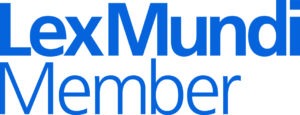On January 28, 2019, Thailand, as a member state of the World Intellectual Property Organization (WIPO), became the 49th contracting party to accede to theO Marrakesh Treaty to Facilitate Access to Published Works for Persons Who Are Blind, Visually Impaired or Otherwise Print-Disabled, which became legally binding on Thailand on April 28, 2019. In order to comply, Thailand enacted an amendment to the Copyright Act B.E. 2537 (1994) which became effective on March 11, 2019, in the form of Copyright Act (No. 4) B.E. 2561 (2018).
This article examines the purpose of the Marrakesh Treaty, discusses how the latest amendment to Thailand’s Copyright Act attempts to implement the country’s obligations under the treaty, and examines how the Copyright Act (No. 4) may result in unexpected controversy.
The Marrakesh Treaty
The Marrakesh Treaty is intended to help the visually impaired access copies of printed materials by allowing “authorized entities” to create accessible versions of them without having to seek the prior agreement of, or paying a royalty to, the copyright owner. The Marrakesh Treaty aims to improve the availability of printed works in accessible formats for visually impaired persons worldwide, and the new legislation—Copyright Act No. 4—is intended to pursue that goal by easing the circulation of such materials to defined authorized entities and persons within Thailand and on the international market.
The most significant change in Copyright Act No. 4 pursuant to that goal is section 32/4, and the enabling secondary legislation under the Notification of the Ministry of Commerce B.E. 2562 (2019) issued on February 28, 2019, which together provide an exemption to copyright protections to enable access to published works by disabled readers (as defined in the act).
Exemption Under the New Act
The exemption from copyright infringement under the new act applies to people with visual, hearing, physical, or intellectual disabilities or learning disorders, and to authorized entities founded and operating for the benefit of such individuals, conducting business on a non-profit basis only. The act designates that the steps leading to claiming an exemption must not be in conflict with the copyright owner’s normal exploitation of their copyrighted work, which could then lead to an unreasonable prejudice of the copyright owner’s legitimate right. It is important to note that an authorized entity is required to put in place certain measures to ensure that other persons, who do not meet the definition of “disabled persons” under the act, are not able to access the copyrighted works made available strictly for those who do meet the definition.
However, the wording of the provisions under the new act has raised a number of interesting issues related to the prevention of misuse of this humanitarian exemption, and the potential for it to be used as a backdoor to copyright infringement.
Definition of Disabled Persons
Some controversy has been raised regarding the definition of “qualified disabled persons,” as stipulated in Copyright Act No. 4—notably that the term in the act seems to be much broader than required by the Marrakesh Treaty.
The Marrakesh Treaty limits the exemptions to copyright infringement provisions to “print-disabled persons”—a term which is broadly accepted to refer to visual impairment. However, Copyright Act No. 4 extends the exemption to “persons with visual, hearing, physical, or intellectual disabilities or learning disorders.” That expands the scope of exemption far beyond the Marrakesh Treaty requirements, raising difficult questions over how the scope of rights of disabled persons should be defined, and raising the potential for the rights of copyright owners to be eroded far beyond the intention of the WIPO members.
Limitations on Access to Copyrighted Works
In addition to providing too broad a scope of exemption regarding the definition of disabled persons, Copyright Act No. 4 provides potentially inadequate limitations to access, as it does not clearly specify what measures are appropriate to prevent exempted copyrighted works from being exploited by others. Copyright Act No. 4 does not set forth appropriate means to monitor whether an authorized entity, acting for those who are defined disabled readers, is operating within the scope allowed, despite the unreasonable prejudice to the copyright owner’s legitimate right that would arise in such a situation. For example, if an association that produced audiobooks for the visually impaired under Copyright Act No. 4 was found to also be making them available to non-visually impaired persons, Copyright Act No. 4 would provide no specific preventative measures, nor any remedy to the copyright owner.
Conclusion
Thailand’s amended Copyright Act is rooted in an admirable attempt to provide a clear humanitarian perspective to Thai copyright law, and to assist those with disabilities, pursuant to the global initiative to increase access to print works for the visually impaired. However, the amendments go far beyond that, leaving several controversial issues about which copyright owners and IP practitioners need to be cognizant in order to foster an adequate balance between copyright owners’ rights and the public interest. The advantages and disadvantages of the amended section 32/4 of Copyright Act No. 4 will become clearer in the future, once access to copyrighted works by defined disabled persons increases. In the meantime, copyright owners should be aware of the potential for misuse, and should remain vigilant toward the increased need to protect their rights.






